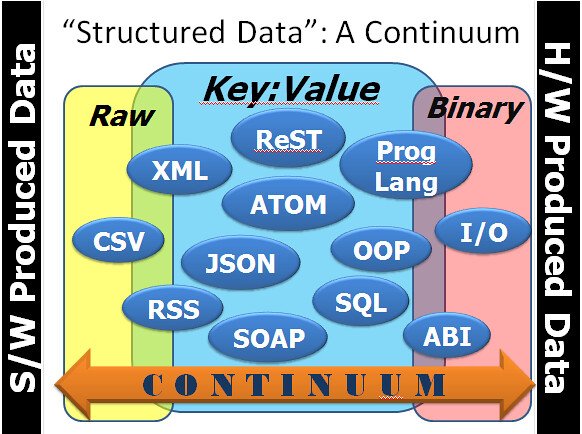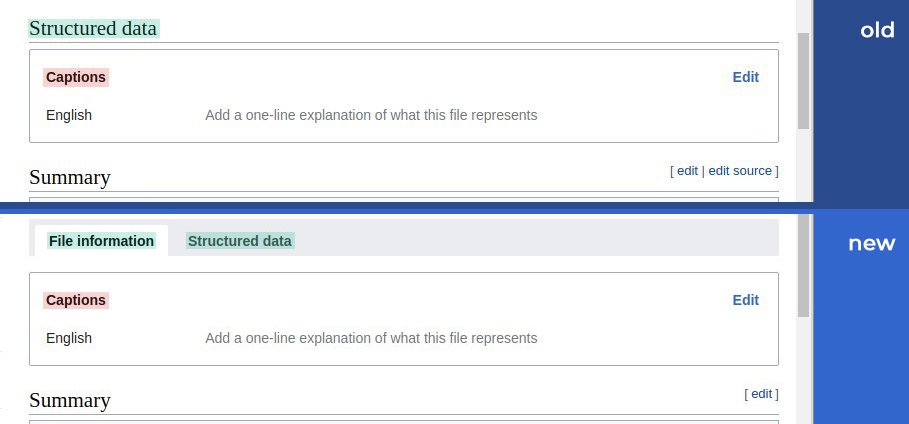In a vast digital landscape where information reigns supreme, websites have become the cornerstone of businesses’ online presence. However, merely having a website is not enough to guarantee success in this competitive domain. To truly stand out, businesses must learn to harness the power of structured data – the invisible force that propels websites to new heights and unlocks their untapped potential. In this comprehensive guide, we will embark on a journey to unleash the hidden power of structured data and explore how it can optimize websites like never before. Buckle up and get ready to revolutionize your web presence as we delve into the depths of structured data and its transformative capabilities.
Table of Contents
- Harnessing the Potential of Structured Data: Understanding its Significance in Website Optimization
- Analyzing Structured Data: Unlocking Valuable Insights for Optimization Strategies
- Optimizing Website Performance: Key Recommendations for Utilizing Structured Data Effectively
- Implementing Structured Data: Best Practices for Maximizing the Power of Website Optimization
- Q&A
- In Conclusion

Harnessing the Potential of Structured Data: Understanding its Significance in Website Optimization
Structured data has become a game-changer in the world of website optimization. With the increasing complexity of search engine algorithms, it has become more important than ever to optimize your website to enhance visibility and improve user experience. By harnessing the power of structured data, you can take your website to new heights and unlock its true potential.
So, what exactly is structured data? In simple terms, it is a way of organizing and providing context to your website’s content. It helps search engines understand the purpose and meaning behind your data, allowing them to display richer and more accurate results to users. Structured data uses HTML tags, such as schema markup, to define specific elements on your webpages, such as product reviews, event details, or FAQ sections. By adding this extra layer of information, you not only make it easier for search engines to understand your content but also provide a better user experience by enabling features like rich snippets and knowledge panels.
Here are some reasons why harnessing the potential of structured data is crucial for website optimization:
1. Improved Search Engine Rankings: By providing search engines with structured data, you are essentially giving them a roadmap to understand and interpret your content. This can lead to higher rankings in search results, as search engines can more accurately determine the relevance and quality of your website.
2. Enhanced User Experience: Structured data allows search engines to display additional information about your website in search results, beyond the usual title and meta description. This can include star ratings for products, event dates and locations, or FAQ answers. These additional details not only catch the attention of users but also provide valuable information upfront, increasing the likelihood of click-throughs and conversions.
3. Increased Click-Through Rates: Rich snippets, which are visually enhanced search results with structured data, can significantly improve your click-through rates. These eye-catching snippets often feature images, ratings, and other useful information that make them more appealing to users. As a result, your website stands out from the competition, attracting more clicks and driving higher organic traffic.
4. Competitive Advantage: While structured data is still not widely adopted by many websites, it presents a golden opportunity for you to gain a competitive edge. By implementing structured data, you can differentiate your website and stand out in search results. This can be particularly advantageous in industries where competition is fierce, as you can leverage structured data to highlight unique selling points and attract more attention.
5. Future-Proofing Your Website: As search engines continue to evolve and become more sophisticated, structured data is expected to play an even more significant role in website optimization. By adopting structured data early on, you future-proof your website and ensure it remains relevant and visible in the ever-changing digital landscape.
In conclusion, structured data is a powerful tool that can unlock immense potential for your website. By understanding its significance and implementing it effectively, you can optimize your website for search engines, improve user experience, and gain a competitive advantage in the online world. So, don’t miss out on the opportunity to unleash the power of structured data and take your website to new heights.
Analyzing Structured Data: Unlocking Valuable Insights for Optimization Strategies
Structured data plays a pivotal role in unlocking valuable insights for optimizing your website. It provides a systematic and organized way of classifying and formatting your content, making it easier for search engines to understand and index. By implementing structured data, you can enhance your website’s visibility, improve search engine rankings, and attract more organic traffic.
One of the key benefits of utilizing structured data is the ability to achieve rich search results. Rich snippets, such as product reviews, star ratings, and event information, can significantly enhance your website’s appearance in search engine results pages (SERPs). These visually appealing snippets not only grab users’ attention but also provide quick and concise information about your website’s content directly in the search results.
Structured data also enables you to optimize your website for voice search. With the popularity of virtual assistants like Siri and Alexa, optimizing your website’s content for voice queries is becoming increasingly important. By structuring your data in a way that aligns with common voice search patterns, such as question-based queries, you can increase the chances of your website being featured as the voice search result.
Overall, understanding and implementing structured data is crucial for unlocking valuable insights and optimizing your website. By embracing structured data, you can improve your website’s visibility, attract more organic traffic, and stay ahead of the competition in today’s digital landscape. So, take the time to explore the power of structured data and unleash its full potential to boost your website’s performance.
Optimizing Website Performance: Key Recommendations for Utilizing Structured Data Effectively
Website performance is crucial for attracting and retaining visitors, and utilizing structured data effectively can greatly enhance your website’s efficiency. By implementing structured data markup, you can provide search engines with valuable information about your content, leading to better visibility in search results. To optimize your website performance, here are some key recommendations for utilizing structured data effectively:
1. Choose the right schema: There are various schema types available, each serving a specific purpose. From article and recipe schemas to event and product schemas, it’s important to select the most relevant schema for your content. This ensures that search engines understand and interpret your data accurately.
2. Focus on rich snippets: Rich snippets are search results that display additional information, such as ratings, reviews, and images, providing users with more context about your content. By including structured data markup for rich snippets, you can stand out in search results and attract more clicks.
3. Optimize for mobile: Mobile optimization is crucial in today’s digital landscape. Make sure your structured data is responsive and well-optimized for mobile devices. This means ensuring that the structured data is easily visible and accessible on all screen sizes, providing a seamless user experience for mobile users.
4. Test and validate: It’s essential to test and validate your structured data markup using tools like Google’s Structured Data Testing Tool. This helps identify any errors or missing elements that could affect the performance of your website. Regularly monitoring and updating your structured data ensures accuracy and relevance.
5. Keep it organized: Structured data should be organized and well-structured to ensure efficiency. Use proper HTML tagging, headings, and subheadings to categorize your data effectively. This not only helps search engines understand the hierarchy of your content but also improves overall user experience.
By following these key recommendations, beginners can unlock the power of structured data and optimize their website performance efficiently. Remember, structured data acts as a guiding light for search engines, enabling them to better understand and present your content to the right audience. So, start implementing structured data effectively and witness the positive impact it has on your website’s visibility and performance!
Implementing Structured Data: Best Practices for Maximizing the Power of Website Optimization
Unleash the power of structured data and take your website optimization to new heights. When it comes to implementing structured data, there are a few best practices that can help you maximize its potential. By following these tips and tricks, you can ensure that your website is fully optimized and ready to attract more traffic and boost your search engine rankings.
– Understand the basics: Before diving into structured data, it’s crucial to have a clear understanding of what it is and how it works. Essentially, structured data is a way to organize and label the information on your website in a standardized format that search engines can easily understand. By doing so, search engines can display your content in more relevant and engaging ways, such as rich snippets, knowledge graphs, and more.
– Choose the right schema markup: Schema markup is a type of structured data that uses a specific vocabulary to provide additional context and meaning to your content. It’s important to choose the right schema markup that best reflects the type of content you have on your website. Whether it’s a blog post, a product page, or a recipe, there are various schema types available to help you provide the most accurate and detailed information to search engines.
– Optimize for user experience: While structured data is crucial for search engines, it’s equally important to consider the user experience. Ensure that your structured data enhances the overall experience for your website visitors by making the information more accessible and user-friendly. Consider incorporating visually appealing features such as star ratings, price ranges, and images, as well as using structured data to provide useful information like event dates, hours of operation, and customer reviews.
By implementing these best practices, you can harness the true power of structured data and unlock the full potential of website optimization. Stay tuned for more expert tips and stay ahead in the competition.
Q&A
Q: How can structured data help optimize a website?
A: Structured data is a powerful tool that enhances the performance of a website by providing context and organization to its content. It helps search engines better understand the website’s information and display it in more engaging and informative ways.
Q: What is structured data and why is it important?
A: Structured data refers to the organization of data using a specific format, commonly schema.org. It provides search engines with valuable information about the website’s content, such as product details, reviews, event information, etc. This helps search engines deliver more relevant and appealing search results, improving the site’s visibility and increasing user engagement.
Q: How does structured data benefit SEO efforts?
A: By implementing structured data, websites can have rich snippets displayed in search engine results pages. Rich snippets provide additional information like star ratings, prices, and images, making the search results more attractive and increasing click-through rates. This, in turn, improves SEO rankings and boosts organic traffic.
Q: Can structured data improve website performance for mobile devices?
A: Absolutely! With the rise of mobile browsing, structured data becomes even more crucial. By employing structured data designed for mobile, websites ensure their content appears prominently on small screens. This improves the user experience and helps drive more mobile traffic, thereby enhancing website performance.
Q: Is it difficult to integrate structured data into a website?
A: While implementing structured data may seem daunting at first, there are various tools and plugins available to simplify the process. Content management systems like WordPress offer plugins that allow easy integration of structured data. Additionally, following online guidelines and using schema generators can make the task more manageable, even for those with limited technical expertise.
Q: What are some common types of structured data used to optimize websites?
A: Some popular types of structured data include schemas for articles, products, events, recipes, local businesses, and reviews. These schemas provide search engines with specific details about the website’s content. By utilizing the appropriate schema markup, website owners can make their data more structured and accessible to search engines.
Q: Can structured data positively impact the user experience?
A: Absolutely! Structured data enhances the user experience by presenting more relevant and appealing information directly in search results. Users can quickly find key details, such as prices, ratings, or upcoming events, without even clicking the link. This saves time, increases engagement, and provides a more satisfying user experience.
Q: How frequently should structured data be updated on a website?
A: It’s crucial to keep structured data up to date to ensure accurate representation of the website’s content. Whenever there are changes to products, pricing, or other relevant information, the structured data should be updated accordingly. Regularly reviewing and updating schema markup guarantees that search engines have the latest and most relevant data from the website.
Q: Can structured data lead to increased conversions or sales?
A: Yes, structured data can contribute to higher conversions and increased sales. By enriching search results with additional information, structured data can attract more qualified leads. Potential customers who see product prices, ratings, or reviews directly in search results are more likely to visit the website and make a purchase. This creates opportunities for businesses to boost their conversion rates and generate more sales.
Q: Is structured data the ultimate solution for website optimization?
A: While structured data is an essential aspect of website optimization, it is not a standalone solution. Other optimization techniques, such as responsive design, site speed, quality content, and user-friendly navigation, are also crucial. Structured data should be seen as a powerful tool that complements these techniques and enhances the overall optimization efforts of a website.
In Conclusion
As we conclude our journey through the realm of website optimization, we hope that this guide has unveiled the true potential of structured data. Like a powerful elixir, structured data holds the key to unlocking an abundance of opportunities that can transform your website into a beacon of success.
Harnessing the power of structured data is not merely a technical endeavor, but rather an art form that seamlessly merges creativity with precision. By organizing and categorizing your website’s information, you can build a solid foundation that propels your online presence to new heights.
Just as a meticulously crafted masterpiece captivates the senses, structured data captivates search engines, ushering visitors to your virtual doorstep with open arms. It breathes life into your content, enabling it to flourish amidst the vast expanse of the internet.
So, go forth, armed with the knowledge and understanding gained from this guide, and unleash the power of structured data upon your website. Embrace the possibilities it presents – the increased visibility, enhanced user experience, and untapped potential lying dormant within your digital world.
Remember, as with any unfolding adventure, continuous learning and adaptability are the cornerstones of success. Stay ahead of the curve, explore new horizons, and always push the boundaries of what is possible.
So, dear reader, embark confidently on your optimization journey. May structured data be the key that unlocks the gateway to your digital triumph. May your website radiate with a magnetic allure that keeps visitors enchanted and coming back for more.
Farewell, and may your endeavors be blessed with a future that is structured, optimized, and infinitely bright.

